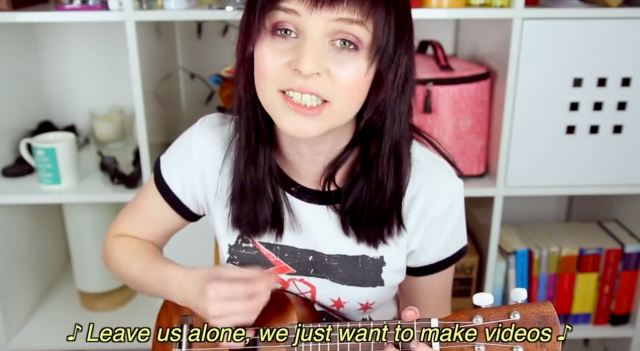
A post at the YouTube Creators’ blog late Monday has acknowledged that YouTube commenters, never ones for productive discussion, have turned the site’s Google+ integration changeover to their advantage. There are now new and worse ways to propagate spam and immaterial content below videos, which has created an avalanche of complaints and outcries from both viewers and content creators. It seems as if Google can’t move fast enough to give its users tools to manage the triumphantly abusive and off-topic trolls of YouTube.
YouTube started to require that its users log in to Google+, allegedly to help fix the cesspool that was the YouTube comments section. The strategy was two-pronged: One, Google+ would require users to tie their comments to a real name and persona for accountability purposes. Two, the integration would use Google+ profiles to tailor comments to each user so that they would only see a few types of comments below videos: comments from Google+ friends, comments from “YouTube personalities,” and “engaged conversations.”
But along with those changes, Google also thought it would be safe to turn off certain comment restrictions. Previously, YouTube comments had a character limit and couldn’t contain hyperlinks in order to prevent some of the worst spam. Now those restrictions are off, leading to people posting links to porn or screamer videos, or just dropping ASCII porn art below videos.
To compound the problem (just as we predicted at the time of the change rollout), Google greatly underestimated the ability of YouTube commenters to produce what qualifies as “engaged conversation” while managing to be also disgusting, offensive, NSFW, irrelevant, or all of the above. And that appears to be the heart of the issue.
YouTube commenters are exceedingly good at either bickering or piling on to each other to produce a long comment thread. Because of the lack of content moderation, the relaxed restrictions, and the fact that there are enough people who do not care if their offensive comment is attached to their real name, not only are those long and terrible comment threads still there, but they are now often featured prominently as the video’s meatiest discussion. For certain values of “meatiest,” that is not entirely inaccurate.

Many of YouTube’s prominent users were unhappy with the way the comments had changed, mainly for forcing their viewers to sign in to Google+ to comment, but also for the formatting. YouTube personality Vi Hart condemned the system for “promoting hateful inflammatory comments because they provoke responses.” Edwardspoonhands.com highlights comments on a video by YouTube personality Emma Blackery that were promoted to the top because they are controversial (e.g., one comment that is a racial slur repeated 85 times), not because they are popular.
The Google+ integration has also proven unpopular in a broader sense for a couple of reasons. The change constitutes a) meddling with a well-understood, if broken, system in the interest of creating engagement and more data affiliated with real people, thus creating more business for Google, and b) doing so using Google’s social network, which sits somewhere on a spectrum between reviled and ignored. Google seems to be counting on the outcry against Google+ itself to eventually settle down. The company’s response to the newly bad YouTube comments has been to finally introduce better content moderation at a high level. The update to the system will have “better recognition of bad links,” according to the YouTube blog post, as well as “improved ASCII art detection” and altering the display of long comments.
The next step will be to add bulk comment moderation, a long-requested feature that YouTube has avoided until now. The post also mentions briefly that the team is “working on improving comment ranking.” However, no details are provided on how the system will overcome YouTube’s ability to co-opt the definition of “engaged” and turn it into, specifically, “controversial.”
The Google+ integration, though, appears to be here to stay. That’s despite the fact that the strongest user-based case for its use—that accountability will prevent trolls from trolling—has been killed, drowned in a sea of ASCII penises.
Listing image by YouTube / Aurich Lawson
reader comments
193